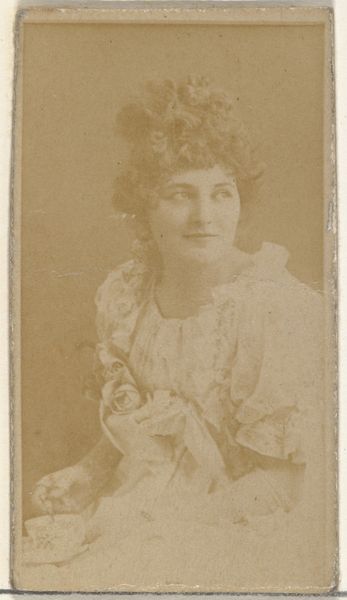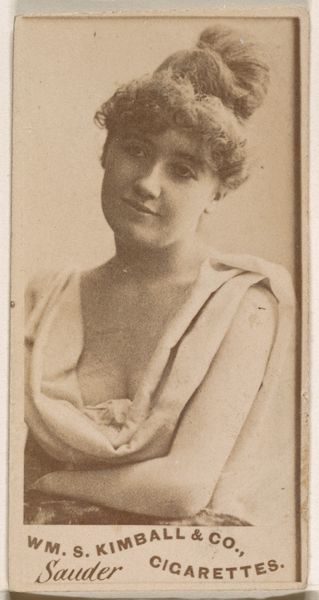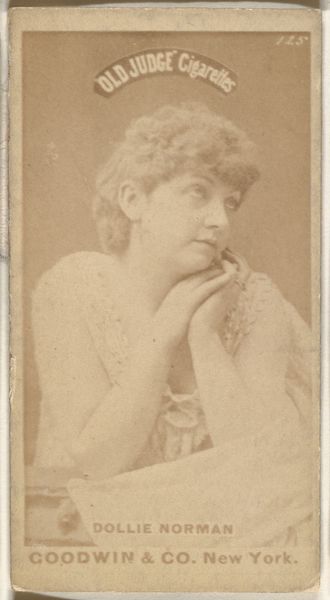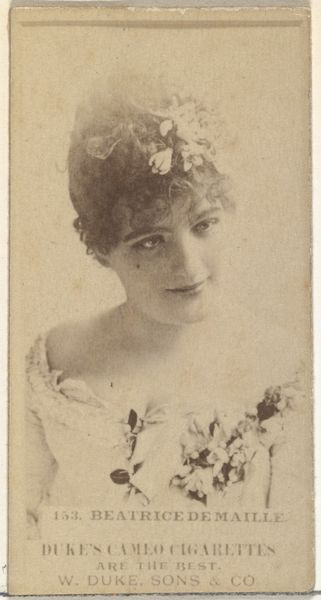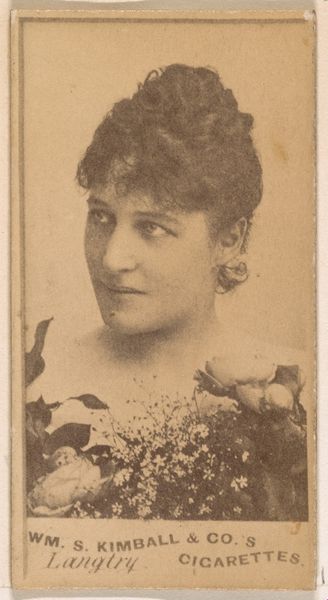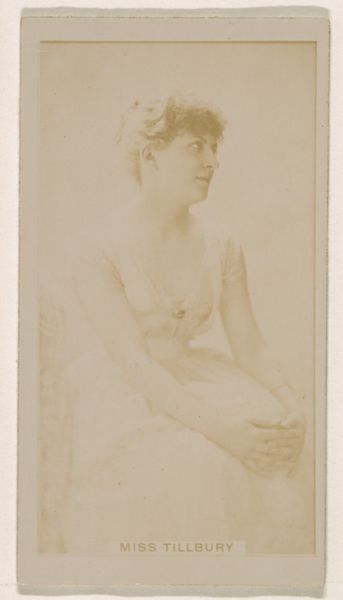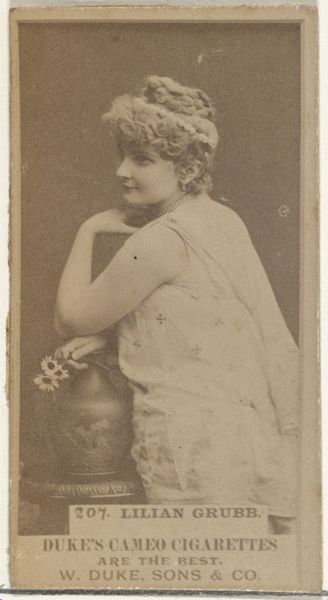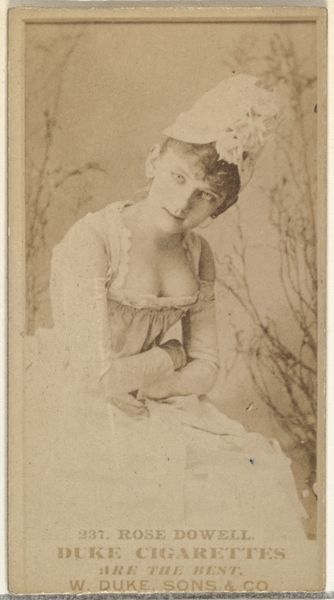
Card Number 500, Carrie Rumbold, from the Actors and Actresses series (N145-7) issued by Duke Sons & Co. to promote Duke Cigarettes 1880s
0:00
0:00
print, photography
#
portrait
# print
#
photography
#
genre-painting
Dimensions: Sheet: 2 11/16 × 1 3/8 in. (6.8 × 3.5 cm)
Copyright: Public Domain
Curator: This is card number 500 from the "Actors and Actresses" series (N145-7), dating from the 1880s. It features Carrie Rumbold and was issued by W. Duke, Sons & Co. to promote Duke Cigarettes. Editor: It’s strikingly muted. The monochromatic tones create a pervasive sense of faded grandeur, almost sepia-toned nostalgia. Is that intentional, or simply the nature of early photographic prints? Curator: A bit of both, I suspect. The sepia tone is a consequence of the photographic process of the time. But the composition also plays a crucial role. Observe the layering of forms: the drape of fabric, the gentle curve of her arm, and the floral details around her shoulder, these construct a deliberate sense of depth. Editor: The flowers definitely speak to the feminine ideal that was valued at the time, and the way her body is draped suggests a particular aesthetic... what do you make of the advertisement on it? I assume Rumbold was well-known. Curator: Indeed, a celebrity endorsement – connecting fame with consumption. As for the symbolic implications, you could say Rumbold is positioned as the muse or emblem of the Duke brand, her elegance associated with the pleasure of smoking. Editor: Yes, and it reinforces that problematic connection we've seen so often: equating beauty and status with unhealthy practices. Though, viewed another way, you could say she has power here. As the "muse," her image dictated consumer habits. It almost reframes agency to see the face rather than the company name printed largely, as they might be today. Curator: That is astute. The visual hierarchy does invite us to focus on Rumbold herself, although ultimately, this particular photograph is a testament to commercial artistry using a common form of genre-painting that captured the idealized form of portraiture. The careful distribution of light and shadow emphasizes her idealized beauty, while seamlessly drawing our eye to the subtle marketing message. Editor: In the end, whether an artwork or artifact, this piece offers so many ways to analyze history by offering insight to art styles, human forms, or simply cultural commentary. Curator: Exactly. Analyzing these aesthetic and marketing tactics provides invaluable cultural commentary even today.
Comments
No comments
Be the first to comment and join the conversation on the ultimate creative platform.
